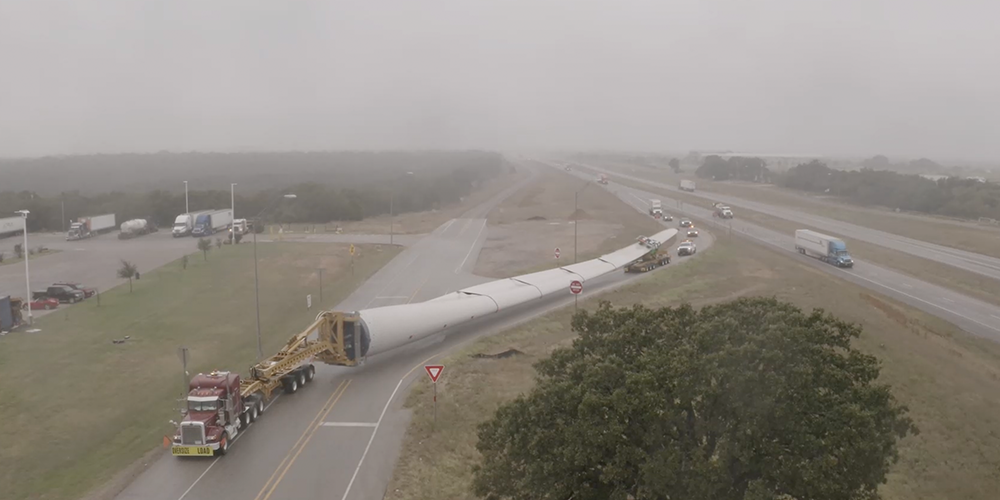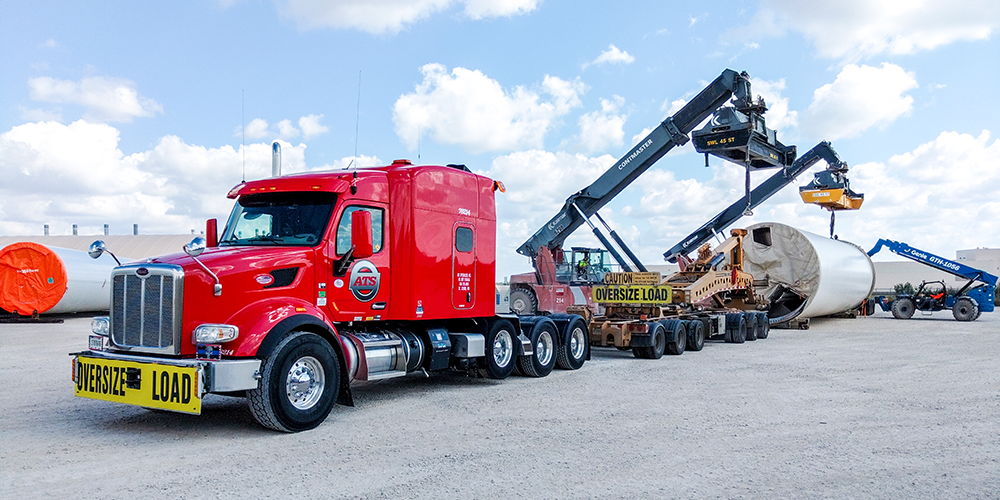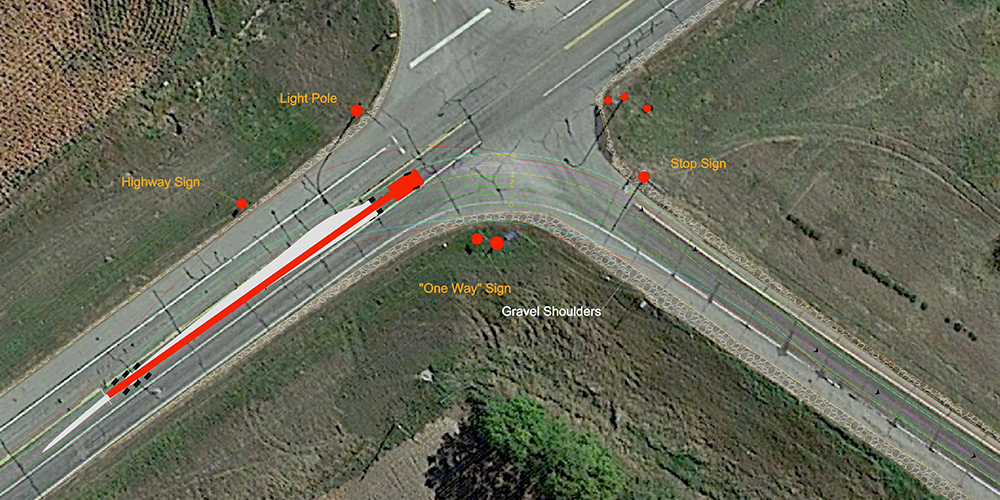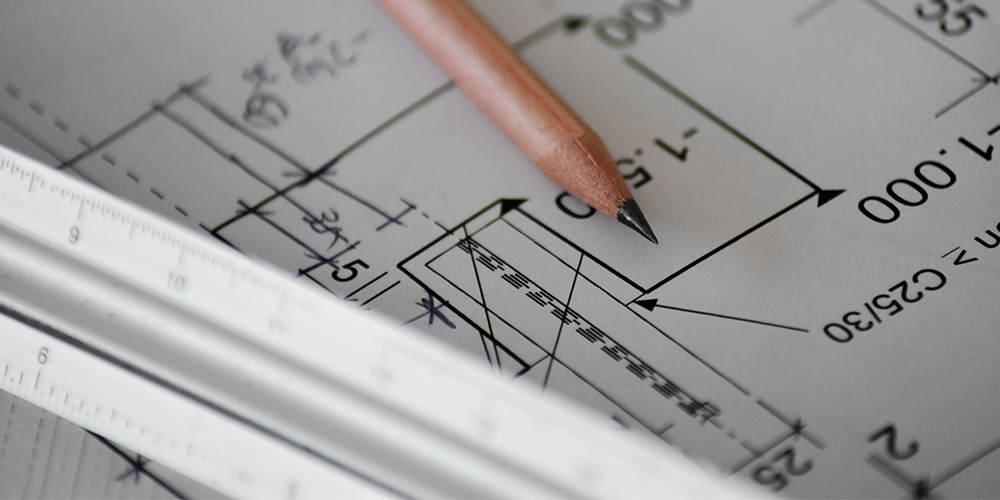
If you’re in the early stages of planning a large project — like a new wind farm, oil refinery or data center — you’ve already got a lot on your plate. But it’s vital that you don’t overlook the transportation aspect of the project too. After all, that could literally affect whether or not your project is even feasible.
When it comes to the transportation side of things, it’s a good idea to utilize a wide variety of what we here at ATS call “technical services,” which can include:
- Site reviews
- Route reviews
- Swept path analysis
- Product feasibility assessment
- Transportation drawings
- Route feasibility assessments
With in-house teams dedicated to the various aspects of technical services, we’ve been helping customers plan a variety of projects for decades.
This article will help you determine what each aspect of technical services is, why you would need it and how much time you should allow for each service to be executed.
What is a Site Review?
Site reviews are used to determine if a route is available to transport components from the shipper to a construction site. If a route exists, site reviews can also discover what improvements are required — if any — in order to get components to a planned construction site.
When You Need a Site Review
They are commonly conducted between the job site and the closest major highway. Generally, that’s all the further site reviews need to be conducted because most major highways can safely handle the transportation of large components.
If your main concern is whether or not your project site is a feasible location, a site review is a great place to start. And if you’re unsure, it’s a good idea to have a site review conducted.
While many site reviews are conducted with a broad brush, they can get more granular if you know exactly what components you’ll be bringing to the site. In those cases, you can even receive recommendations on which equipment makes the most sense for you to use when transporting the components.
How Much Time Does a Site Review Take?
A general rule of thumb is to begin conducting a site review 30 days prior to when you need it finished. That can vary based on the size of the project, how far away it is from the closest major highway, the origin and destination of the freight and more.

What is a Route Review?
A route review audits the route from origin to destination to find the safest and most efficient way to get the components delivered to the job site. The route review may also provide suggestions to what route improvements need to be made along the way, like widening a road, moving signage and more.
Oftentimes, route reviews are conducted in person to ensure nothing that might be missed on satellite imagery is overlooked. That might mean flying to the point of origin and driving the entire route to catch anything that could impact the route.
When You Need a Route Review
Route reviews are needed if you’re transporting any type of large component — like wind towers or blades — that may veer out of driving lanes or lead to the need to take extremely wide turns.
Route reviews ensure you won’t do anything that damages your components or any infrastructure along the way — reducing the risk of extra charges or slowdowns.
How Much Time Does a Route Review Take?
Much like site reviews, it’s best to allow for roughly 30 days to complete a route review. Again, that timeframe can vary wildly depending on the size of your project and the distance traveled.
Another factor to consider when requesting a route review is how much time you might need following the review to make improvements. Will you have to widen the road in several places? Or will temporarily removing a few signs be enough? Depending on the outcome, it could greatly impact your timeline.

What Is Swept Path Analysis?
Swept path analysis involves calculating the movement and path of different parts of a vehicle or freight during a turning maneuver. This is done as a way to determine if anything will contact a fixed object or leave the roadway during a turn.
Swept path analysis is typically done using computer software that generates renderings of what the turn will look like.
When You Need Swept Path Analysis
If you’re requiring transportation of large components — especially components that stretch beyond the length of the trailer (i.e. wind blades) — it’s a good idea to conduct a swept path analysis review.
The more turns you have along your route, the more likely it is that you’ll need a swept path analysis review done. Those turns can include the turns it takes to leave or enter the pickup location or destination. These drawings can be customized to fit your specific transportation configurations.
How Much Time Does a Swept Path Analysis Take?
You might start noticing a theme here. Like the last two technical services, you should allow for 30 days to conduct a swept path analysis, give or take, depending on the size of your project and the distance traveled. In the case of a swept path analysis, the more turns you have, the more time you’ll need as well.
What is a Product Feasibility Assessment?
Product feasibility assessments exist to not only help you determine if your component can realistically make it down the road but also help you determine if it can be transported on standard equipment types.
For example, if wind tower sections were designed in a way that would require them to be transported using a dual-lane trailer, as opposed to a standard Schnable trailer, a product feasibility assessment would advise you to find a way to reduce weight and/or dimension.
That’s because dual-lane trailers are hard to find, would limit available routing options and require more expensive permits, which means it would cost you two to three times as much to move.
When You Need a Product Feasibility Assessment
It’s a good idea to seek a product feasibility assessment any time you’re designing a new component — especially if nothing like it has been transported before. These are especially important to have done early in the design process — before too much research and development time has been invested on a particular component.
How Much Time Do Product Feasibility Assessments Take?
As a general rule of thumb, it’s a good idea to allow — you guessed it — 30 days to have a product feasibility assessment conducted. They don’t usually take that long to finish, but when it comes to planning your production schedules it wouldn’t hurt to allow for 30 days of downtime for certain teams.

What Are Transportation Drawings?
Transportation drawings provide the exact specifications of your freight on the transportation equipment — like dimensions, weight and balance. This information can then be brought to state and local municipalities to acquire the necessary permits to move your components.
When You Need Transportation Drawings
If you’re seeking transportation of anything that’s over-dimensional — or above 13 feet, 6 inches high, 8 feet, 6 inches wide and 80 feet long when you factor in the freight and the trailer — it’s a good idea to have transportation drawings done.
How Much Time Do Transportation Drawings Take?
While they don’t take as long as the other technical services, it’s still not a bad idea to allow for 30 days to get transportation drawings done.
One factor we haven’t mentioned prior is what else is on your technical services provider’s plates. So while some of these factors don’t necessarily take 30 days to conduct from start to finish, it may take some time for them to begin work on your request. Ultimately, they should have your request taken care of within 30 days, but it’s always a good idea to clarify when making your request.
What is Routing Feasibility?
Routing feasibility and site and route reviews can sometimes go hand-in-hand. As site and/or route reviews are being conducted, they’ll discover how feasible the route really is and what it’ll take to do the project.
Do roads need to be created? Do loading docks need to be built? Several things could be discovered. While those types of cases aren’t terribly common, they can happen.
When You Need Route Feasibility Assessments
If your project site is “off the beaten” path, you’ll want to have someone run a route feasibility assessment. You may learn your diamond in the rough of a location may be rough to get to — or not even possible.
How Much Time Do Route Feasibility Assessments Take?
The 30-day theme continues for this as well. It’s a good idea to allow at least 30 days before you need the results to reach out to your technical services provider. And, just like most of the other services, the timeframe can vary based on the size and stature of your project.
Including Technical Services in Your Project Planning
As you build out your project schedule, it’s vital that you consider one or more of these technical services. By cutting corners and skipping a necessary step in planning your project, you could discover surprises along the way that completely throw off your project timeline.
To avoid those surprises, don’t forget to consider the following technical services:
- Site reviews
- Route reviews
- Swept path analysis
- Transportation drawings
- Route feasibility assessments
Over the decades we’ve helped people execute their projects we’ve found those that account for transportation — and, therefore, technical services — early in the planning process tend to be more successful.
If you'd like some help with any of the technical services you see above, we'd be happy to help. Contact us or request a quote to start the process.
